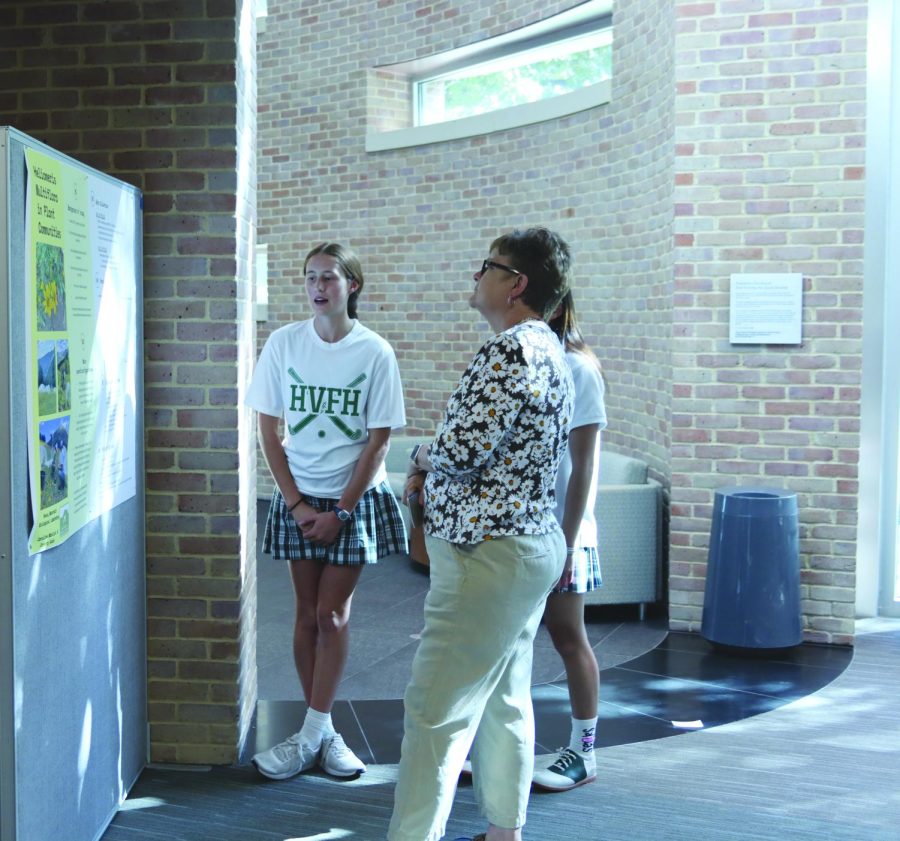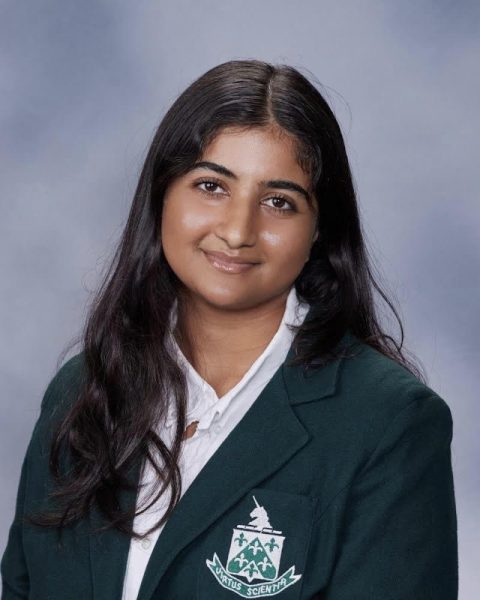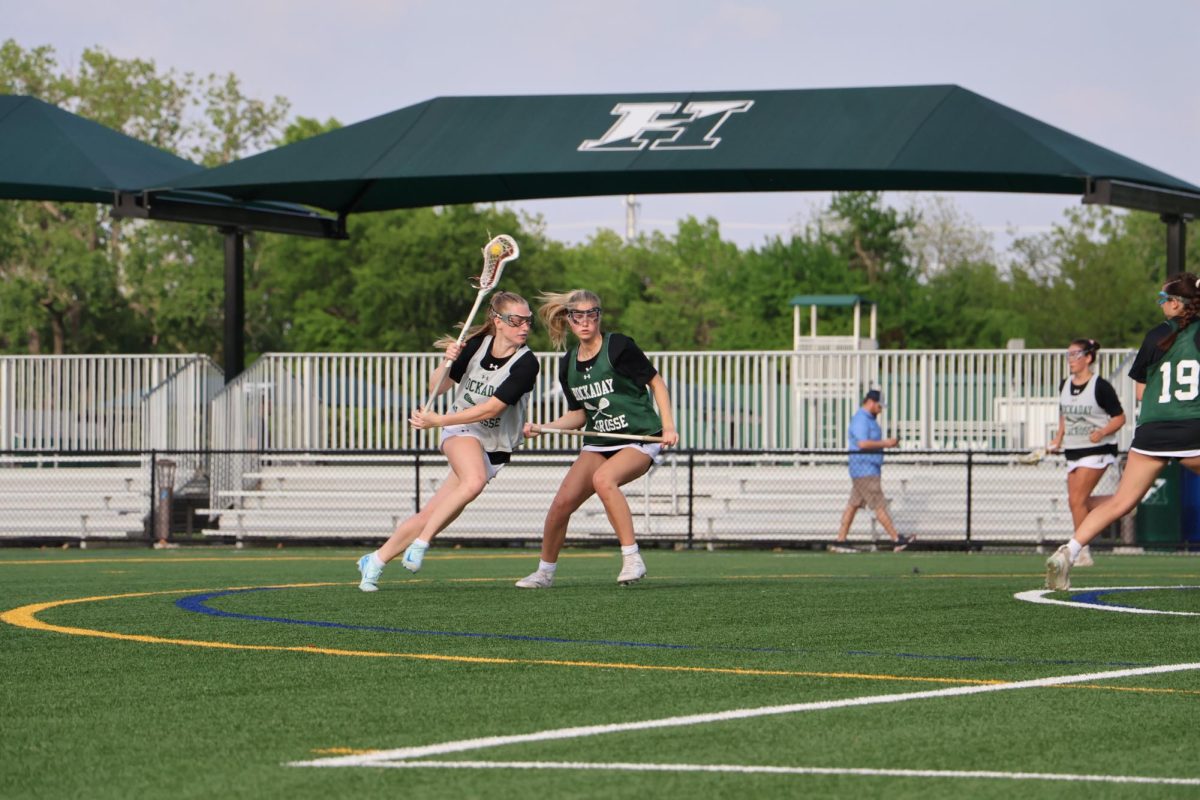Presenting pursuit posters
Students present at Research Symposium
November 10, 2022
Students who have done research over the summer have prepared for the research symposium. The Research Symposium consisted of students standing near their poster and delineating what research they had done. After the Y period on Oct. 21 passed, the posters will stay up for multiple weeks even without anyone to present them.
“The posters are left up for quite some time so that people can just wander through it and look at them and other members of the community and visitors can see them.” Dean of Studies and head organizer of the Research Symposium, Dr. Barbara Fishel said.
These posters are made to ensure that they are always independent, no matter how many weeks they stay up, it is easily understood even without a person standing by to answer any questions. These posters often inspire upper school students and even younger to pursue some sort of research in the future.
“Younger girls who aren’t yet able to go do research see that and then they think oh I mean that looks cool, I would like to do that,” Fishel said. “It is sort of a self-perpetuating kind of thing and encourages girls to figure out what they could do in a scientific field or any kind of research field.”
On Oct. 21, senior Miranda Jefferds presented her findings to fellow students, teachers, and other people with connections to Hockaday. Jefferds pursued her passion in research the summer after junior year at Science Teacher Access to Resources at Southwestern (STARS), a two-month program where students are paired with a professional in their field of interest.
“I worked in the department of molecular biology at UT Southwestern and the lab investigated a bacteria called vibrio parahaemolyticus which is a gram-negative bacteria that is in contaminated seafood and when you eat it you get food poisoning,” Jefferds said. “My research project focused on the secretion system within the bacteria that led to it having these virulence factors which are basically like the factors that make it toxic to us.”
Jefferds made the poster she is presenting at the Research Symposium at the end of her summer program to present it at UT Southwestern Symposium.
“You really have to culminate your research and figure out what key points you want to highlight,” Jefferds said. “Then you have to identify the key materials and the methods that you used and what were the conclusion features in your experiment and organize it all into a poster that is going to be visually engaging.”
UT Southwestern was a common place of research for students over the summer. Juniors Angelina Dong and Christina Dong worked at the John Microbiology Lab at UT Southwestern.
“The main goal of our research and the lab’s research was to reprogram cells in the brain to functioning neurons to help replace those lost by neurodegenerative diseases like altizmers,” Angelina Dong said. “And turn microglia and astrocytes which are two types of glial cells into fully functioning neutrons.”
The Dong sisters did not make a poster during their program but rather in addition to it.
“We have been preparing our poster for about a week and we talked about it with our mentor.” Christina Dong said.
The sisters also benefited from this research by gaining extensive knowledge about their junior year science course.
“We are taking AP biology this year and I really think that this research opportunity helped us get ready and get the foundation that we needed,” Angelina said. “It’s really cool to see how these concepts apply in the lab.”






